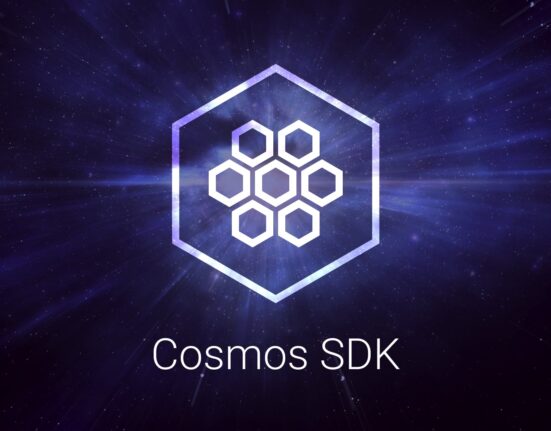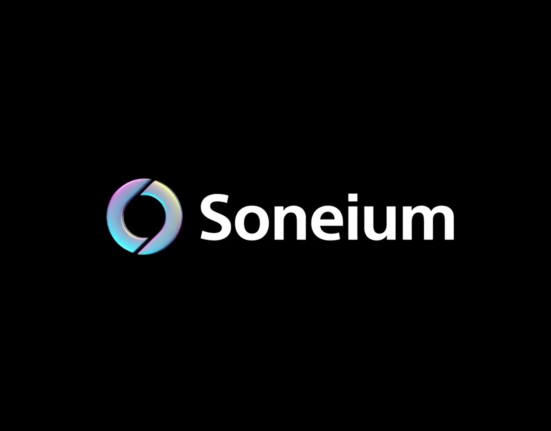Blockchain technology has revolutionized data storage and transfer across various industries, from finance and healthcare to supply chain management and beyond. At its core, the process of writing data to a blockchain follows a specific model known as the “block model.” This article will delve deep into the intricacies of the block model, explaining how it facilitates secure and transparent data storage on blockchain networks.
Contents
The Block Model: An Overview
The block model is the fundamental structure that describes how data is written to a blockchain. It outlines the process of grouping transactions or data into blocks, which are then added to the existing chain of blocks. This model ensures data integrity, immutability, and transparency – key features that make blockchain technology so powerful and revolutionary. By understanding the block model, we can grasp the underlying mechanics that make blockchains secure, decentralized, and resistant to tampering.
Key Components of the Block Model
Transactions form the foundation of the block model. These are the basic units of data in a blockchain and can represent a wide range of information depending on the blockchain’s purpose. In a cryptocurrency blockchain like Bitcoin, transactions typically represent financial transfers between users. However, in more complex blockchain systems like Ethereum, transactions can also include smart contract executions, data storage operations, or any other type of interaction with the blockchain.
Blocks serve as containers that hold multiple transactions. Each block is a crucial element in the blockchain’s structure and typically includes several key components. The block header contains essential metadata about the block, including a reference to the previous block’s hash, which creates the chain-like structure. It also includes the Merkle root, which is a cryptographic hash representing all the transactions in the block, allowing for efficient verification of the block’s contents. Additionally, the block header contains a timestamp, indicating when the block was created, and a nonce, which is a number used in the mining process for Proof of Work blockchains.
The chain of blocks is what gives blockchain its name and its power. Each block is linked to the previous one through the block header, creating an unbreakable sequence. This chaining mechanism is crucial for maintaining the integrity and chronological order of the data stored in the blockchain. Any attempt to alter a block would require changing all subsequent blocks, making it computationally infeasible to tamper with the blockchain’s history.
The Process of Writing Data to a Blockchain
The journey of data from a user’s input to a permanent record on the blockchain involves several steps, each crucial for maintaining the system’s integrity and security.
It begins with transaction initiation. Users submit their data to the blockchain network, which could be a financial transaction, a smart contract interaction, or any other type of data relevant to the blockchain’s purpose. This data is broadcast to the network’s nodes, which are computers participating in the blockchain network.
Once a transaction is broadcast, it enters the verification stage. Network nodes examine the transaction to ensure it adheres to the blockchain’s rules. This includes checking that the user has sufficient funds for a financial transaction, that smart contract conditions are met, or that the data format is correct. This distributed verification process is key to maintaining the blockchain’s integrity without relying on a central authority.
Verified transactions don’t immediately become part of the blockchain. Instead, they enter a pool of unconfirmed transactions, waiting to be included in a block. Mining nodes, also known as miners in Proof of Work systems, or validators in Proof of Stake systems, are responsible for creating new blocks from these pending transactions.
The block creation process involves selecting a set of transactions from the pool and assembling them into a candidate block. The miner also includes the block header information, such as the previous block’s hash and the Merkle root of the transactions.
In Proof of Work blockchains like Bitcoin, the next step is block mining. Miners compete to solve a complex cryptographic puzzle, adjusting the nonce in the block header until they find a solution that meets the network’s difficulty target. This process is computationally intensive and serves as a security mechanism, making it prohibitively expensive to attempt to rewrite the blockchain’s history.
Proof of Stake systems, on the other hand, select validators based on the amount of cryptocurrency they’ve staked as collateral. This approach reduces energy consumption compared to Proof of Work but introduces its own set of challenges and security considerations.
Once a block is mined or validated, it undergoes another round of verification by the rest of the network. Other nodes check that all transactions in the block are valid and that the block itself adheres to the network’s rules. This consensus mechanism ensures that only valid blocks are accepted into the blockchain.
If the block passes validation, it’s added to the existing blockchain. This step makes the transactions in the block a permanent part of the blockchain’s ledger. The new block is linked to the previous one through the hash reference in its header, extending the chain.
The final step in the process is block propagation. The updated blockchain, including the new block, is distributed across all nodes in the network. This ensures that every participant has the most current version of the blockchain, maintaining consistency across the decentralized system.
Advantages of the Block Model
The block model offers several significant advantages that have contributed to the growing adoption of blockchain technology across various sectors.
Immutability is one of the most touted benefits of the block model. Once data is written to a block and added to the chain, it becomes extremely difficult to alter or delete. This is due to the cryptographic links between blocks and the distributed nature of the blockchain. Any attempt to change a block would require changing all subsequent blocks and convincing the majority of the network to accept the altered chain, a feat that becomes increasingly impossible as the chain grows longer.
Transparency is another key advantage. In most public blockchains, all transactions are visible to all network participants. This level of transparency promotes trust and accountability, as anyone can verify the history of transactions. However, it’s worth noting that while transactions are transparent, the identities behind them are often pseudonymous, protected by cryptographic keys.
The block model also provides a high level of security. The combination of cryptographic hashing, consensus mechanisms, and the distributed nature of the blockchain makes it highly resistant to tampering and fraud. An attacker would need to control a majority of the network’s computational power (in Proof of Work) or stake (in Proof of Stake) to have any chance of altering the blockchain, a scenario known as a 51% attack.
Decentralization is a fundamental characteristic of blockchain systems using the block model. Unlike traditional centralized databases, there’s no single point of failure or control. This distributed architecture enhances resilience against attacks and censorship, as the network can continue to function even if some nodes go offline.
Challenges and Considerations
While the block model has proven to be a robust and innovative approach to data management, it’s not without its challenges.
Scalability is one of the most significant hurdles facing blockchain technology. As the number of transactions increases, the blockchain can become slower and more resource-intensive to process. This is particularly evident in popular cryptocurrencies like Bitcoin, where transaction confirmation times can increase during periods of high network activity. Various solutions are being developed to address this, including layer-2 scaling solutions and alternative consensus mechanisms.
Storage requirements present another challenge. Because the blockchain maintains a complete history of all transactions, the size of the blockchain grows continuously. This can lead to significant storage demands for full nodes that maintain a complete copy of the blockchain. Some projects are exploring solutions like sharding or pruning to manage blockchain size while maintaining security and decentralization.
Also Read: NFTs Explained: A Beginner’s Guide to Non-Fungible Tokens
Energy consumption is a concern, particularly for Proof of Work blockchains. The competitive mining process consumes substantial amounts of electricity, leading to environmental concerns. This has sparked a shift towards more energy-efficient consensus mechanisms like Proof of Stake, as well as the exploration of renewable energy sources for mining operations.
Privacy considerations also come into play. While blockchain transactions are pseudonymous, the transparency of the ledger can sometimes lead to privacy issues. Advanced cryptographic techniques like zero-knowledge proofs are being developed to enhance privacy while maintaining the benefits of blockchain transparency.
Regulatory challenges are another important consideration. As blockchain technology gains wider adoption, governments and regulatory bodies are grappling with how to apply existing laws or create new ones to govern blockchain-based systems. This regulatory uncertainty can impact the development and adoption of blockchain technologies in various sectors.
The Future of the Block Model
As blockchain technology continues to evolve, we can expect to see refinements and innovations in the block model. Research is ongoing into more efficient consensus mechanisms, improved privacy features, and solutions to scalability challenges.
Interoperability between different blockchain networks is likely to become increasingly important, potentially leading to new models for how blocks and chains interact across systems. The integration of blockchain with other emerging technologies like artificial intelligence and the Internet of Things may also lead to novel applications of the block model.
Conclusion
The block model is the cornerstone of blockchain technology, describing how data is written, stored, and secured on a blockchain network. By grouping transactions into blocks and linking these blocks cryptographically, the model creates a secure, transparent, and immutable ledger of transactions. While challenges remain, particularly in areas of scalability and energy efficiency, the block model has proven to be a powerful paradigm for decentralized data management.
As we continue to explore and refine blockchain technology, the block model will likely undergo further evolution. However, its core principles of decentralization, transparency, and security will remain central to the blockchain revolution. Understanding this model is crucial for anyone looking to grasp the full potential of blockchain technology and its capacity to transform industries and redefine how we manage and trust digital information.

Raksha, a seasoned journalist, specializes in crafting insightful narratives on blockchain and AI developments. With a keen eye for innovation, she distills complex topics into accessible stories, providing readers with a clear understanding of the dynamic intersection between these transformative technologies.







